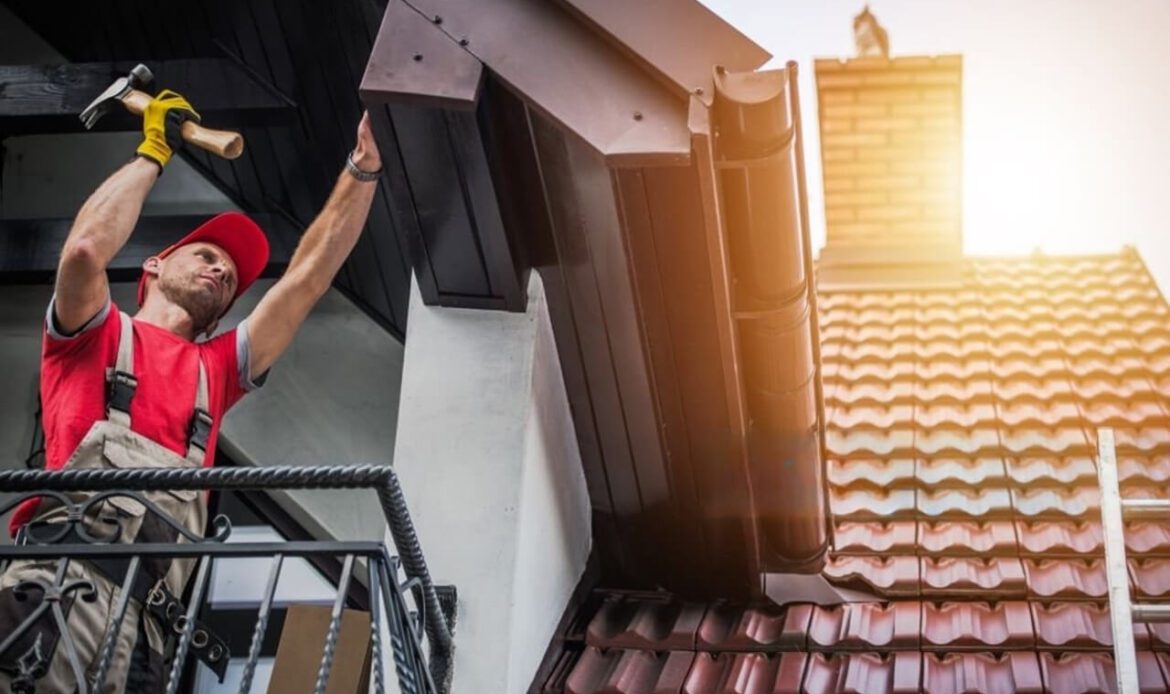Post-Roof Installation Cleaning and Inspection: Essential for Quality Assurance and Safety
After completing a roof installation, thorough cleaning and inspection are equally important. These steps not only ensure the construction site is neat but also verify the construction quality and identify potential issues. Proper post-installation cleaning and inspection contribute to the roof’s longevity and ensure residential safety. This article provides a detailed guide to the post-installation cleaning process and key inspection points, helping you maintain top-notch quality control and peace of mind.
Cleaning Up Residual Construction Materials
After installation, roofing sites often have leftover debris such as tile fragments, nails, and metal pieces, which not only look unsightly but also pose safety hazards.
Remove Debris and Waste
Thoroughly clean up the area, focusing on fragments like tile edges, metal pieces, and nails that may scatter across the roof and surrounding spaces. Use a broom or vacuum to ensure all debris is cleared. Larger residuals should be properly disposed of to maintain a tidy and safe environment.
Clean the Drainage System
Dust and tile fragments from the construction process can block gutters and drains. Carefully clear out these systems to ensure smooth water flow, using water to flush the drains and observe the flow for blockages. A clear drainage system prevents water accumulation, essential for long-term roof protection.
Recover Tools and Equipment
Check for leftover tools or equipment, especially smaller items like nails and screws. Ensure all tools are collected and stored properly to maintain a clean and organized roof and yard.
Thorough Inspection of Waterproofing Integrity
The waterproofing layer is critical for roof protection, and post-installation inspection ensures its durability and prevents future leaks.
Check Waterproof Layer Seams
Pay close attention to seams, which are prone to cracking or loosening. Ensure all seams are flat and secure. Reapply sealant if necessary to seal any gaps, preventing water infiltration.
Inspect Edges and Ridges for Waterproofing
Edges and ridges are often exposed to harsh weather. Verify that waterproof materials in these areas are secure and intact. Press gently to assess stability and ensure no gaps or signs of detachment. These checks reduce the risk of leaks.
Verify Insulation and Thermal Layer Performance
The quality of insulation and thermal layers impacts indoor temperature regulation and energy efficiency. Post-installation inspection ensures optimal performance.
Touch Test the Thermal Layer
On sunny days, touch the roof’s underside to gauge the insulation’s performance. Properly installed insulation should result in a stable temperature without excessive heat penetration. This simple test effectively evaluates thermal layer functionality.
Inspect Insulation Layer Integrity
In colder seasons, insulation prevents heat loss. Check for damage or gaps, especially at seams and corners. Ensure the insulation layer is evenly and tightly fitted for optimal performance.
Check Roofing Material Fastening
Proper fastening of roofing materials ensures the durability and safety of the structure, making this inspection crucial.
Examine Tile and Panel Firmness
Tap tiles or panels to confirm they are secure. Refasten any loose tiles to prevent them from dislodging during strong winds. Also, visually check the alignment and spacing of materials for tight and even placement.
Inspect Nails and Screws
Fasteners are the backbone of roofing material stability. Examine each nail and screw, ensuring they are tightly embedded without signs of looseness. Use a manual wrench for added reinforcement if needed.
Ensure Ventilation and Exhaust Openings are Safe
Roof vents and exhaust outlets must remain unobstructed to ensure proper air quality and safety indoors.
Clear Ventilation Openings
Dust and tile debris may block vents during construction. Ensure vents are clear using a small brush or vacuum, allowing for proper airflow.
Seal Exhaust Outlets
The seal around exhaust outlets affects functionality. Verify there are no cracks or loosened components. Use heat-resistant sealant if necessary to secure and seal these areas, preventing leaks into the roof interior.
Conclusion
Post-installation roof cleaning and inspection are critical for ensuring quality and safety. From clearing debris to meticulously inspecting waterproofing, insulation, and ventilation systems, a comprehensive cleaning and inspection process can identify potential issues, ensuring durability and safety for years to come.


